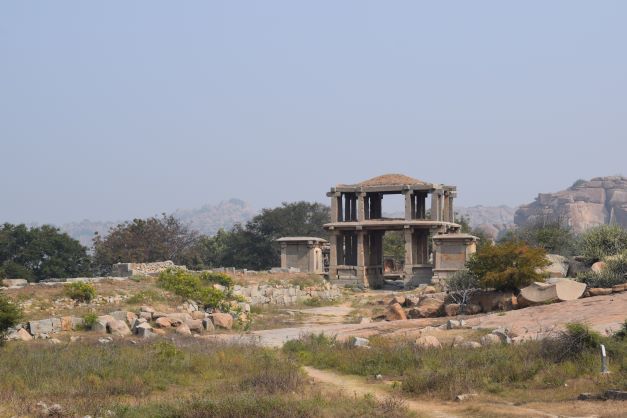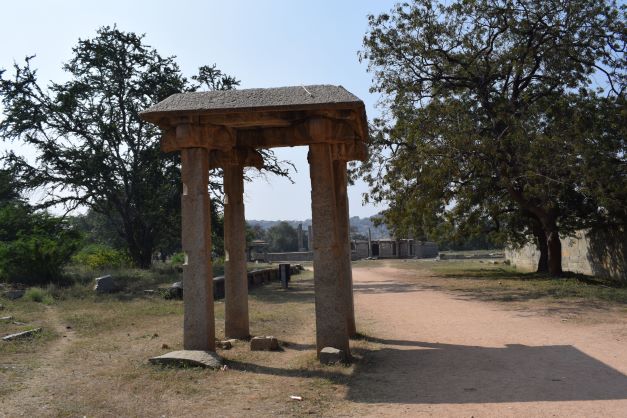Tungabhadra River-side Trail, Hampi, Karnataka, is an amazing 2 km walking trail, that brings the memories and history of ancient Kishkinda and (more recent) Vijayanagara times alive!
Starting from the east-end of Hampi Bazaar, the walking trail (through the right bank of Tungabhadra river) takes us through a few landmark monuments, locations, numerous (countless) stone structures and mantapas enroute to Vittala Temple on the other end. One could extend the trail up to Gejjala Mantapa at the east-end of Vittala Bazar, making it a 3 km trail (one-way).
The key attractions on the path are Chakra Theertha, Kothanda Ramaswamy temple, Yanthrodharaka Anjaneya Temple, Hastagiri Ranganatha Temple, Varahaswamy Temple, Achutaraya Temple, Achutaraya bazar, Achutaraya Pushkarani, Sugriva Cave, Narasimha Temple, Kings Balance, Purandara Mantapa, Inscribed Vishnu Temple, Nammalvar Temple, Shivappa Temple, Vittala Bazar, Vittalaraya Pushkarani, Kuduregombe Mantapa, and Gejjala Mantapa.
Chakra Theertha also happens to be the place where Sri Anjaneya is said to have met Sri Rama and Lakshmana.
Walking this trail is highly recommended for everyone visiting Hampi – the antiquity, the saga, the structures, the topography, the monuments and the views enroute are overwhelming! The experience, matchless!
Location: https://goo.gl/maps/kdutDvjzG7UNhFax9
#drive #nature #heritage
About Hampi:
Hampi (Kishkinda), Karnataka is situated on the banks of river Tungabhadra 340 km north of Bengaluru.
With more than 1,600 monuments covering ~40 sq kms, Hampi is a World Heritage Site and World’s Largest Open-air Museum.
Hampi, referred to as Kishkinda in Ramayana, has ancient history traceable to thousands of years.
Most of the current day ruins were built by Vijayanagara kings during 1336 – 1565 CE.
Hampi at one time was most prosperous and considered to be the largest city in the World. As per the chronicles of European and Persian travellers, Hampi had dedicated trading markets for diamonds, pearls, silks, brocades, and had opulent palaces, marvelous temples, royal quarters, embassies for foreign emissaries, massive fortifications, large pools, baths, water management systems, aquaducts, pavilions, stables, riverside features, pillared halls, Mandapas, memorial structures, gateways and defence check posts.
Hampi – it’s a living museum!



































